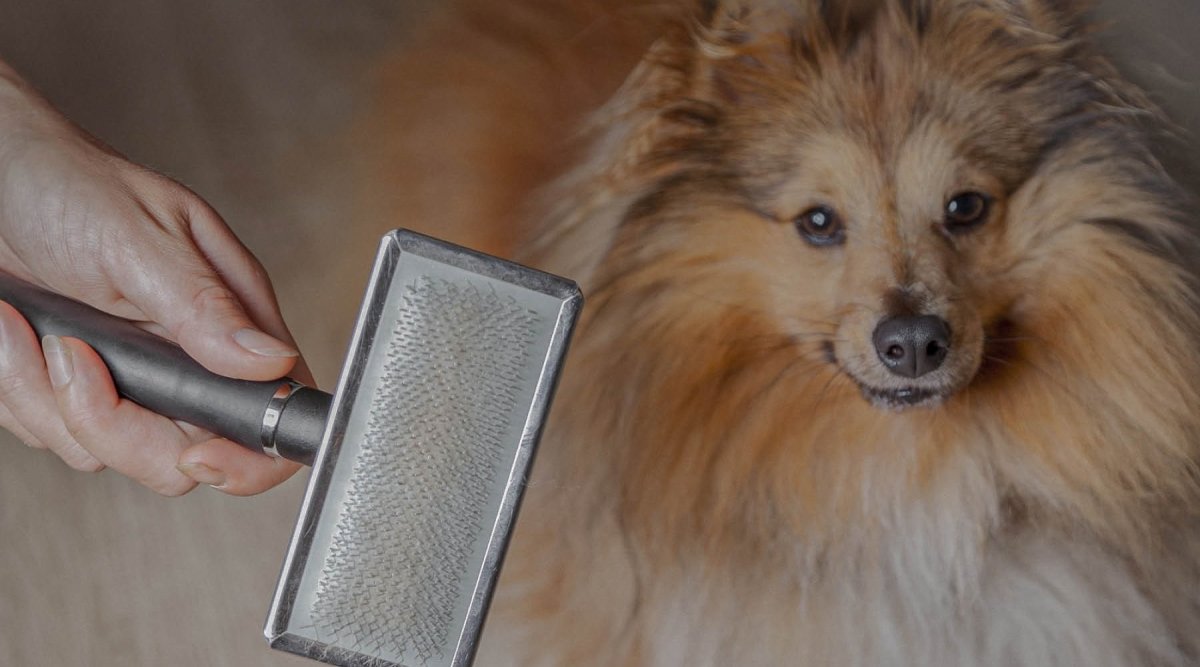Today, AniForte interviews vet Philipp Schledorn about vestibular syndrome in dogs. This is a disorder of the sense of balance that occurs without warning. The vet consultation is designed to give you first-hand experience of medical cases. Philipp Schledorn advises with his expertise in veterinary questions.
AniForte®: Dr. Schledorn, what does a typical case of vestibular syndrome look like?
Dr. Schledorn: I currently have a case of a 12-year-old Labrador named Max who was admitted to the clinic at four in the morning. The dog's owners were already very distressed on the phone as they suspected their pet was suffering from a stroke. As the symptoms had appeared very suddenly, they wanted to come to the clinic immediately. They carried Max in a bed sheet - he could no longer walk safely at this point. When I saw the dog, I immediately suspected what must have happened. The dog was tilting his head, his eyes were twitching and moving jerkily from left to right. We call these movements nystagmus. After a thorough examination, the clinical picture of geriatric vestibular syndrome was confirmed.
AniForte®: What exactly is vestibular syndrome?
Dr. Schledorn: By vestibular syndrome we mean a disorder of the vestibular organ. We and dogs have two such organs. These are located in the right and left inner ear. If one of the two vestibular organs fails, the brain no longer receives specific information about where up and down is. The dog has the feeling of being constantly on the move. This causes nausea. Do you remember the last rollercoaster ride? When we get off and get our feet back on the ground, we need a brief moment to get our bearings again. In the first few hours of the illness, Max constantly feels as if he is riding a rollercoaster or is seasick. This is of course very unpleasant.
AniForte®: What are the signs of vestibular syndrome?
Dr. Schledorn: The sudden onset of symptoms is characteristic of the condition. Max showed the following symptoms from one day to the next without any continuous deterioration:
- the described nystagmus, i.e. the eyeballs move jerkily from right to left without interruption
- the tilted head posture
- a swaying, unsteady gait. Sometimes Max just walked in circles as if he was drunk.
- Disorientation
- Vomiting - Max's family told me that he had vomited at home and was salivating more.
- Difficulties with food intake
AniForte®: What is the cause of vestibular syndrome in dogs?
Dr. Schledorn: At present, there are only assumptions as to why the syndrome develops. These include a severe ear infection that leads to a disease of the vestibular system. An acute circulatory disorder is also suspected as a cause.
AniForte®: What is the course of the disease in vestibular syndrome?
Dr. Schledorn: Of course, the symptoms are very unpleasant, but there is usually a marked improvement after three days and the dog can certainly lead a dog-friendly life afterwards. The twitching of the eyes usually improves significantly after two to three days. The unsteady gait also becomes much more stable over the course of the first week. However, the head tilt can persist for a very long time. But Max will be able to come to terms with it and lead a pain-free life.
We must not forget that it is not only Max who needs help, but also his family. It is terrible for all of us to see our dog, who is now a permanent member of the family in every household, suffering like this. It was particularly important for me to be able to calmly explain to Max's family, after I had cared for him, what the prospects were for their dog.
AniForte®: How were you able to help Max?
Dr. Schledorn: First of all, I examined Max thoroughly, including a general examination, especially of the ears, and a blood test. Once I was sure that no other cause could be responsible for his behavior, the first thing we did was to stimulate his blood circulation with infusions. Max then stayed with me in the clinic for two to three days, depending on how quickly his recovery progressed. Max is given anti-nausea medication to stop the nausea. It is important that Max continues to receive daily medication to stimulate his circulation after his stay in hospital. I am also happy to administer a vitamin B preparationwhich improves nerve function.
During the first few days in the clinic, I feed Max from my hand because he finds it very difficult to eat from the bowl.
Max's owners have also asked me how long their family favorite should stay in the clinic. My answer is always the same: it depends on Max. It depends on how quickly he recovers. As a rule, the dogs stay in the clinic for two to three days for infusions, additional therapy and intensive care.
In short, that means
- Infusions at the clinic to quickly improve blood flow to the vestibular organ.
- A medicine against nausea
- Vitamin B preparation to support nerve function (e.g. brewer's yeast or spirulina)
- Feeding from the hand, small portions
AniForte®: Is vestibular syndrome in dogs a reason to put them down and let them go?
Dr. Schledorn: For some dog owners, the question arises as to whether they want to let their old companion suffer so obviously. But let me be clear: vestibular syndrome in dogs is not a reason to put them down. Dog owners see their dogs suffer. It hurts, but within a short time after treatment, the four-legged friends usually make rapid progress.
AniForte®: Can there be setbacks in the healing phase of vestibular syndrome?
Dr. Schledorn: At 12 years old, Max is already at an advanced age. This means that regeneration can also take a little longer. Of course, vestibular syndrome can recur, just as any disease can recur.
AniForte®: What happens when Max comes home?
Dr. Schledorn: When Max is home he should make progress from week to week. This observation is important. In order to recognize the progress, I recommend that Max's family create a checklist. The list should encourage them and record Max's development. This is particularly important in the first few days.
- Can Max stand up again without any problems?
- Does he still have a wobbly gait?
- Does he still have a tilted head?
- Is he still vomiting?
- Does he still have difficulty eating?
- Do his eyes still show the typical nystagmus?
You can go through this checklist together with your vet during regular check-ups.
AniForte®: What does Max's family need to consider in the first few days?
Dr. Schledorn: A quiet environment is important. Tiles and other smooth floors should be covered with carpets so that Max can walk around the apartment more safely. Feeding should be done by hand for the first few days, and an easily easily digestible food should be offered. It is better to feed small portions several times than one large portion. This takes the strain off the body. Max should be walked on a lead. If necessary, a towel under the belly can provide the necessary security for the first few walks. Max should be regularly checked by the vet to monitor the progress of his recovery.
AniForte®: How can dog owners prevent vestibular syndrome?
Dr. Schledorn: Old dogs should be examined regularly. For example, as a dog owner you should always check your pet's ears. It would be terrible if a severe ear infection led to damage to the vestibular system.
AniForte®: Why is vestibular syndrome also known as a stroke in dogs?
Dr. Schledorn: Vestibular syndrome cannot be compared with the actual stroke that we two-legged friends can suffer from. The only thing they have in common is that the symptoms occur from one moment to the next. A stroke in a two-legged friend is caused by a disease of the cardiovascular system, whereas vestibular syndrome in dogs is caused by a disorder of the vestibular system in the inner ear.
AniForte®: Thank youvery much for the interesting interview.
Dr. Schledorn: Thank you very much for the invitation. I wish all readers and their dogs good health or a speedy recovery.
__________________________
The symptoms of vestibular syndrome are easy to recognize yourself with the tips from vet Philipp Schledorn. The best way to protect your dog, especially as he gets older, is to visit the vet and have his ears checked regularly.
Have you had experience with vestibular syndrome in your dog? Then please share your report in the comments.
By the way: There is also cogenital vestibular syndrome in dogs, a rare hereditary disease. The symptoms are similar to vestibular syndrome and can be traced back to a congenital disorder of the sense of balance, although deafness can also occur. The signs are already apparent in the first few weeks of a puppy's life. Although no treatment is possible, the dog's condition usually improves in the second month of life, so that it can still lead a good life. However, it should not produce offspring, as the disease is inherited.



